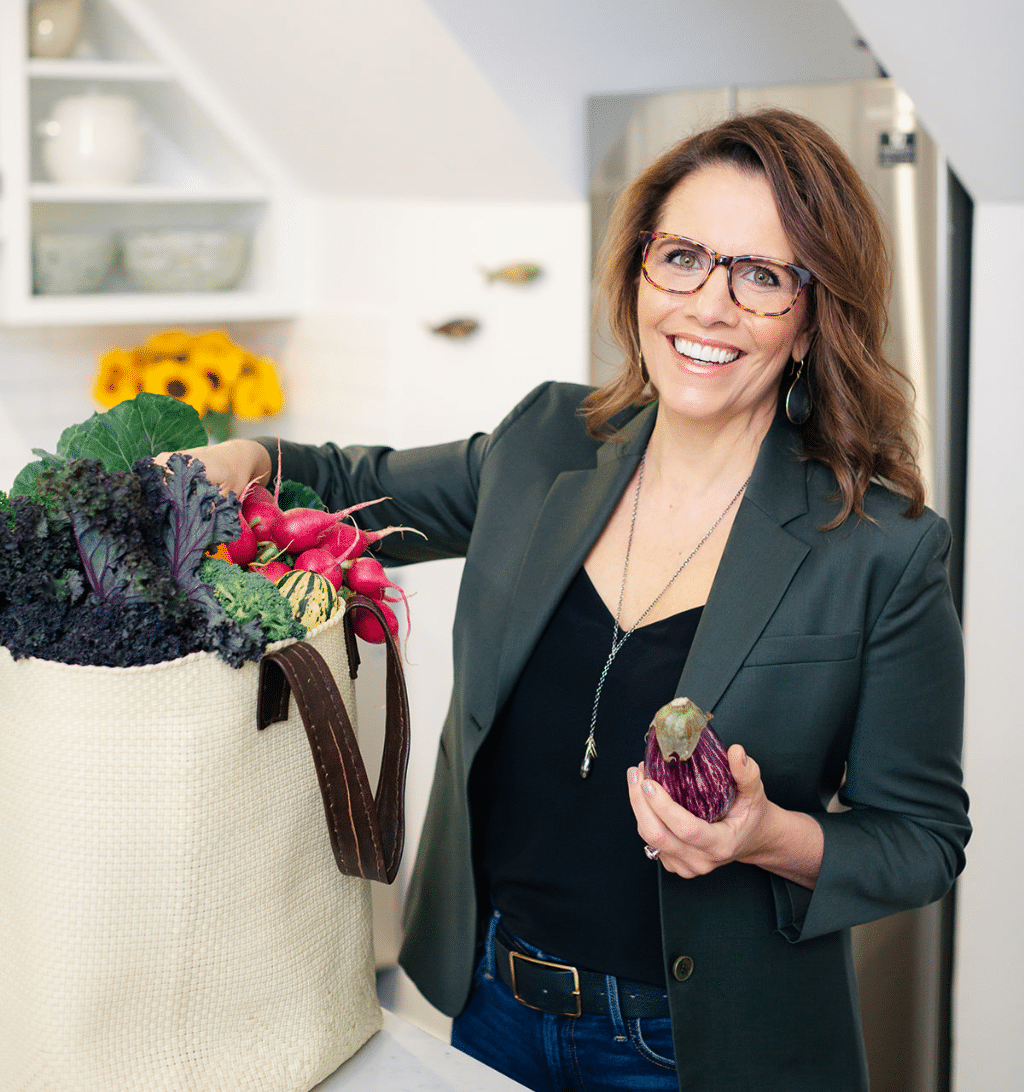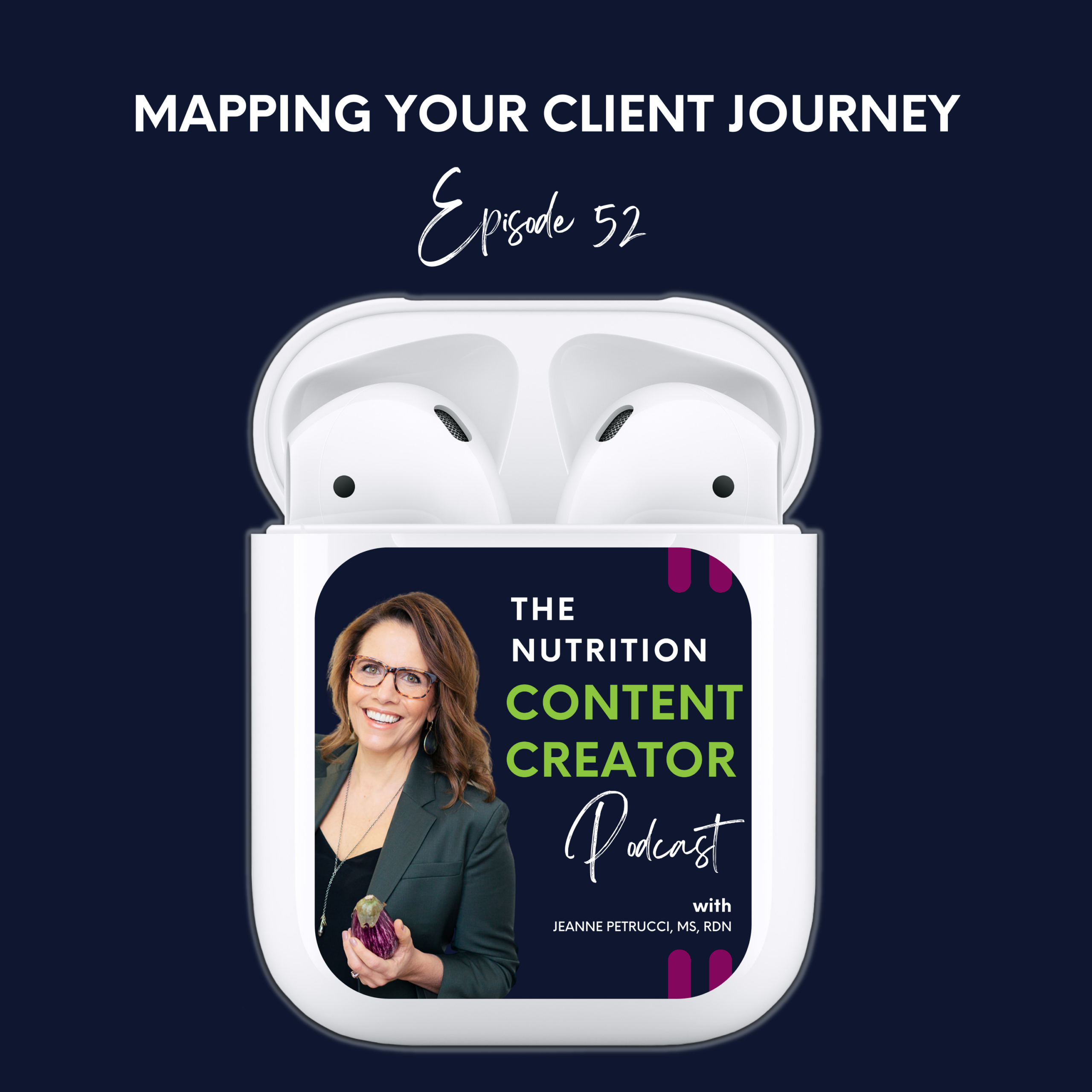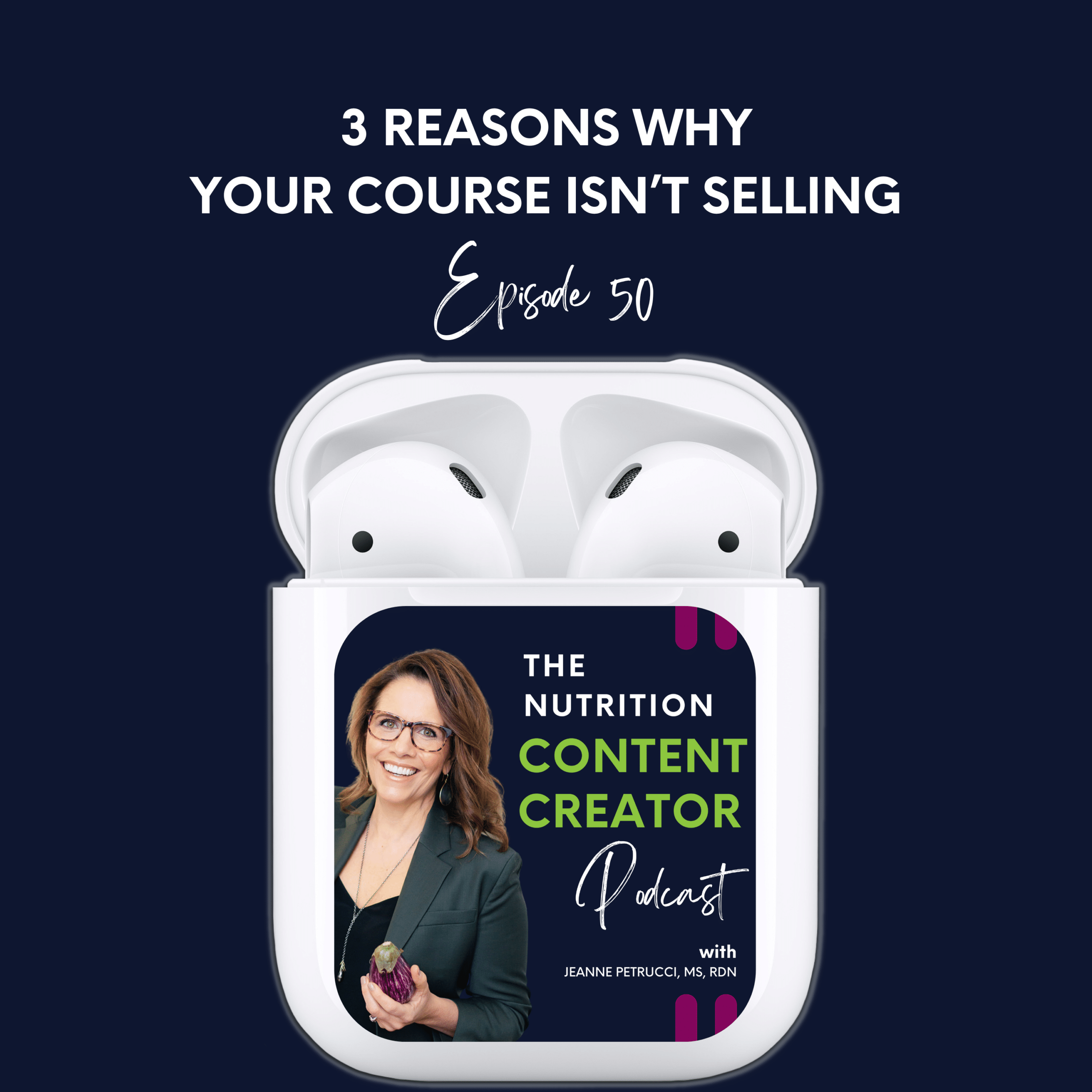3. Will ChatGPT replace you?

It’s no secret. The use of Artificial Intelligence (AI) is becoming increasingly popular. And for good reason. It creates large volumes of content in a fraction of the time humans could do it. AI is rapidly changing the landscape of content creation for everyone, including health and wellness practitioners. With AI’s ability to quickly generate meal plans, activity schedules, and information for free that consider a client’s nutrition prescription, how are we to compete?
But will AI-generated content open doors for opportunity or lead us down a path riddled with fear and uncertainty?
In this episode, we’ll explore the significance of AI tools in content creation for health and wellness practices. We provide nutrition recommendations as part of our client care plans and provide interventions to support them in achieving these recommendations. We’ll cover:
- What AI technology is and its pros and cons,
- Leveraging ChatGPT to elevate your content,
- What it means for the health and wellness profession,
- Content Cure for the Week – three pillars for getting started with this technology
What is AI-generated content?
AI-generated content is any type of content that has been created using artificial intelligence or machine learning. It seems that there are now thousands of programs leveraging AI to make our lives and the lives of clients easier. ChatGPT is one of those programs most of us are familiar with.
Some programs generate both text and images. Some of these programs are free like ChatGPT and some are paid, like Jasper and Dali.
AI-generated content can be used for a variety of purposes such as website copy, social media posts, blog posts, emails, and more.
The technology works by extracting relevant information from large volumes of data and then, using natural language processing (NLP) and machine learning algorithms, it interprets it and generates new content. Let’s break down the process that happens in seconds after you enter a prompt:
- Breaking up the message: ChatGPT takes your message and splits it into smaller parts, like words or parts of words. These smaller parts are called tokens.
- Understanding the message: The program looks at the tokens and creates a “context vector.” This is a fancy way of saying it makes a code that represents the meaning of your message. The context vector helps ChatGPT understand what you want to talk about.
- Creating a response: ChatGPT then comes up with a response by guessing what word or part of a word should come next. It uses the context vector and what it knows about language to make these guesses. It keeps guessing words until it has a complete response to send back to you.
The pros and cons of AI
Here are a few things that both excite and scare me about this type of technology [the pros and cons], how it can impact our industry, and how you can prepare yourself for the coming content wave.
Excite
- AI can help you create large volumes of content at a faster rate than the pen-to-paper method.
- Open AI content tools like ChatGPT are accessible and free-paid versions are more refined but still affordable.
- AI content tools can support the writing process by improving or expanding on the content you have already written.
- They can also support you with modifying and expanding EXISTING content you have a license to use [wink, wink] 😉
- AI can help you brainstorm, generating ideas you can develop on a specific topic.
- Allows smaller businesses to compete with larger players who have the resources to hire teams of content writers.
- Overall, AI can support your content-creation process when used properly.
Scare 👎
- There are few to no regulations in place when it comes to AI-generated content – it’s the Wild West 🤠
- AI-generated content lacks a human voice, which can impact your connection with your ideal clients.
- AI can lack accuracy or sound robotic, making it difficult for potential clients to connect with you and trust your message.
- Plagiarism of existing content is an issue and since references are not offered, you don’t know.
- Loss of creativity.
- It could reduce the market for freelance writers who specialize in health and nutrition topics.
- AI-generated content can be used to spread misinformation or engage in unethical practices.
There will be a flood of content coming from professionals who do not have training and credentials but who can now sound like they are experts. This is the scariest of all!
What it means for the health and wellness industry
What are the implications to our profession as health and wellness practitioners who provide nutrition recommendations as part of our care plans for clients?
It’s unclear as the technology is advancing rapidly [like daily].
However, doing nothing is not the answer. We can’t put our heads in the sand and take a wait-and-see approach.
Those practitioners who embrace some basic principles are going to elevate their practices and remain competitive. Those who don’t will struggle.
As I see it, we need to first and foremost pay attention.
However, don’t get caught up in all the hype. You can go down a rabbit hole with this technology. It’s fascinating for sure but it is not a generate cut-and-paste situation.
When prompted correctly, it can edit, expand, and repurpose content REALLY well. It can also generate original content but this will require significant editing on your part. It’s also outstanding for generating ideas and lists.
In the end, AI can support you with saving more of your non-revenue generating time [time you spend on content creation] and help you focus MORE revenue-generating time in your practice.
Content Cure for the week
Here are my three pillars for getting started with this technology along with your Content Cure for the week, a bundle of editable content that fulfills each pillar.
1.The first pillar is to embrace the technology and LEARN its capabilities [to the best of our abilities] – the latter part of this recommendation being the most important. You need to understand what your purpose is for using AI and what your limits and resources are – resources like time and tech comfort.
It’s hard to scroll through Facebook without seeing an “expert” offering you a course to master ChatGPT for your business. Don’t be fooled. No one is an expert. This technology is so powerful and evolving so fast that one person can’t know it all. So where do you start?
Start with what you know: your practice, your clients, and your resources. Think about how ChatGPT can support you in serving your clients better and saving you time given your existing resources.
Of course, the best way to start is by having done-for-you content ready to edit and infuse with your brand voice.
This brings us to your Content Cure for this week.
For this pillar, I am providing you with a recipe from our meal plans and a prompt for creating content with this recipe. Content you can use in courses, programs, newsletters, emails, and social posts.
The recipe is for basic chia pudding. The prompt is in mad libs style so you can infuse it with your brand voice and practice philosophy. Once the content is generated, copy and paste it to a document and edit away – creating a unique piece of content your ideal clients will crave! If you haven’t listened to episode #1 about identifying a starving audience I highly recommend you do this before editing your content.
2. The second pillar is to DIVERSIFY your content using this powerful tool.
To maintain relevance in this dynamic digital landscape, it’s crucial to explore diverse content types that AI technology cannot replicate easily.
Here are some suggestions for dynamic content to add to your practice:
- Host live Q&A sessions on social media or private client spaces to address concerns of your ICA
- Add recorded cooking videos into programs, social media content, newsletters, and EHR-accessible content
- Vary your forms of content within each platform
- Instagram: Reels, Carousels, Single Images, Stories, Live Events
- Facebook: Shorts, Carousels, Single Images, Live Events
- LMS [Learning Management System] or EHR: Add dynamic content, like videos, to your offers and courses
- Email Marketing: offer downloads, links to videos of you answering burning questions your clients have, links to cooking videos + recipes, create automated challenges
- Collaborate with fellow experts to create joint content and promote a supportive community
- Organize workshops or webinars, both free and paid, to offer clients unique learning opportunities on various nutrition-related topics
For this pillar, I am providing you with a video from our library with directions for adding an intro and outro that brands it for your practice. The video is for Chia Pudding Three Ways so you can leverage the content you just created with the recipe and align it with the video. You can stack the video + content for a rich email or course module experience or you can use it as a standalone social post and even create a reel. Sky’s the limit!
Adding dynamic content like this will support the diversification of your content, attract new clients and different stages of behavior change, make you more competitive, and support visual learners. Be creative and have fun!
3. The third pillar is the most important. Add HUMAN 👩 content, services, and experiences to our practice offerings that AI cannot duplicate.
If you do nothing else, adding more human, more YOU to your practice offerings will help you compete. Because no one can duplicate YOU. Your unique voice, experience, and expertise are all skills that AI can’t replicate. You offer something that no technology will ever be able to provide your ideal clients, a human connection!
Share your personal experiences and tell stories that allow your clients to see themselves in you. Live videos and cooking tutorials also foster a more personal connection with your audience.
One of the best ways to establish and maintain a human connection is through video. If showing up on camera makes you uncomfortable, set a goal for this year to start getting comfortable. You don’t have to show up every day, but you should commit to getting in front of your existing and future clients consistently.
For this pillar, your Content Cure is a prompt for ChatGPT to generate a script for a live event. Don’t feel like you need to prepare a recipe if you are not ready. Start with getting comfortable with the setup. I have provided you with the tools I use and tips for setup. Then begin with something simple, like a chia pudding recipe. It’s no cook, simple ingredients, with LOTS to talk about. You could even just introduce chia seeds and talk about them without cooking. Start where you are comfortable.
The key to a successful live demo is to have a tight script with an agenda of 3-4 takeaways. Let’s say your ideal client is concerned about heart health – 3 takeaways for a conversation about chia pudding could be fiber and its impact on cholesterol, omega-3 and its impact on inflammation, and flexibility of the recipe to accommodate preferences. I have provided you with a ChatGPT prompt to generate a script for your live event.
You won’t read the script during the event but you will use it to guide your conversation. Read it through until you are comfortable with extracting the main points. I also find it helpful to post sticky notes just behind my camera to support me if I forget something.
Key Takeaway
For me, the return to humanity is going to be the GREATEST 🎉 and most exciting impact AI will have on our profession. As the landscape gets flooded with AI-generated content, people will crave human experiences and interaction even more. People will be able to recognize what is authentic and original and what is not. Focus on investing in tools and software that prioritize human-centered design.
Look for programs that emphasize the importance of empathy, communication, and personalization, rather than just efficiency and automation. A great example of such a tool is the LP Rx meal planning software. I built this from scratch because the computer-generated meal plans never worked for my clients. They could tell the plans were generated by a computer and not me and the results were disappointing.
Our meal planner was designed to be a space of teaching, not efficiency. Of human selection, not automation. You now have plenty of content to work with as well as a guide for using ChatGPT. As you start editing and infusing your brand voice into the Content Cure materials remember to stay laser-focused on what your objective is and craft content that supports your ICA’s journey with you.

Jeanne Petrucci MS RDN
Founder, Expert Nutrition Content Creator


